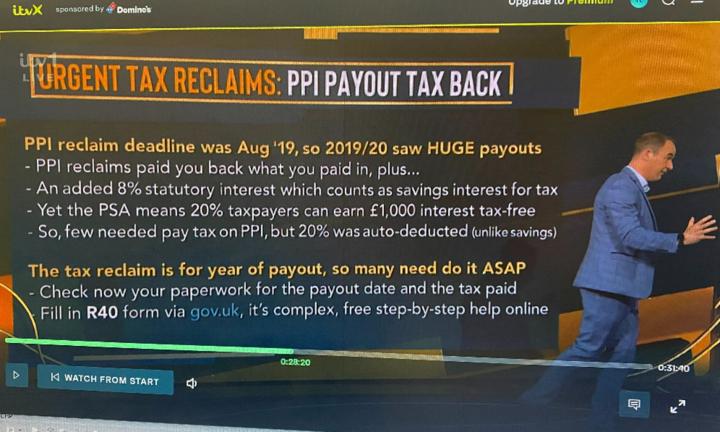The Money Saving Expert shared his helpful information in tonight’s episode of The Martin Lewis Money Show on ITV.
He issued an urgent reminder regarding tax reclaims and PPI payout tax back.
“When you got PPI paid back, you were paid back what you put in but they added what’s called 8 per cent statutory interest, which counts as savings interest for tax,” explained Mr Lewis.
This sum of money is automatically taken out – when a lot of people don’t need to pay it.
If tax is due on PPI payouts, most companies will take this out automatically at the basic 20 per cent rate before you receive the money.
But, when the personal savings allowance was launched in April 2016, many people were owed tax back.
“It means if you’re a 20 per cent taxpayer you can earn a grand a year without paying tax on it, if you’re a 40 per cent taxpayer you could earn £500 a year on it,” explained the MSE.
However, since the PSA was introduced, many people were still having 20 per cent PPI tax sums automatically deducted.
“This means most people should not have been taxed on it, but were taxed, in which case it is the year of your payout that count.”
It means if your PPI payout was substantial, you could be owed thousands.
For example, if the total PPI reclaim was £15,000, roughly £1,470 could have been taken out over 10 years.
How to claim the tax back
If you think you are entitled to tax back, use the ‘Claim a refund of income tax deducted from savings and investments’ form R40 on gov.uk.
This is an R43 form if living overseas.
Mr Lewis advised checking your paperwork for the payout date, and the tax paid.
You can’t reclaim on tax payouts received before April 6, 2019.
If you were paid in the 2019/2020 tax year, it means you have just three-and-a-half week’s time to claim.
This comes as the MSE revealed a trick that could see you land a whopping £500 in your bank account from energy companies.
In an episode of the Martin Lewis Money Show Live, the saving expert shared the useful hack.
He also shared how you can become debt-free quicker by using 0 per cent balance transfer cards – here’s what you need to know.


